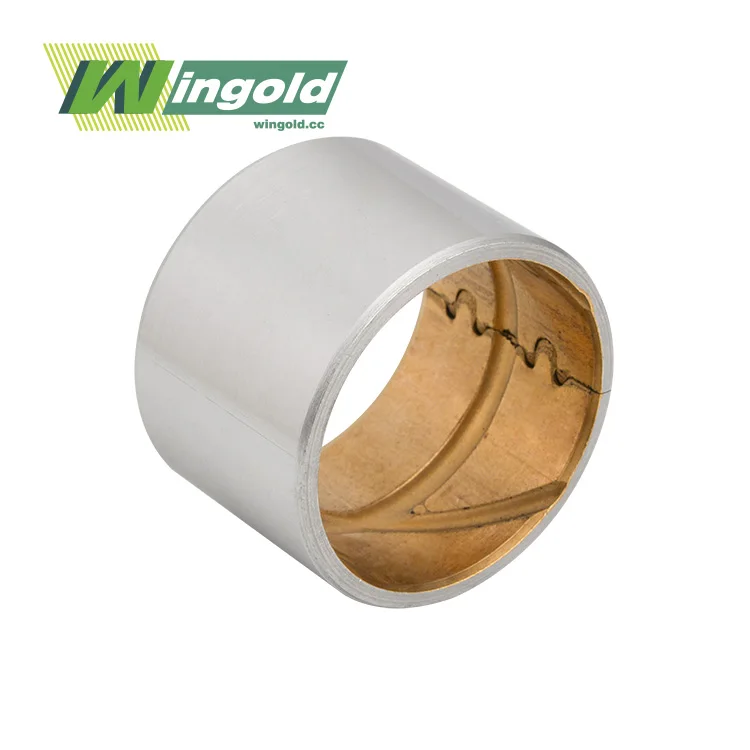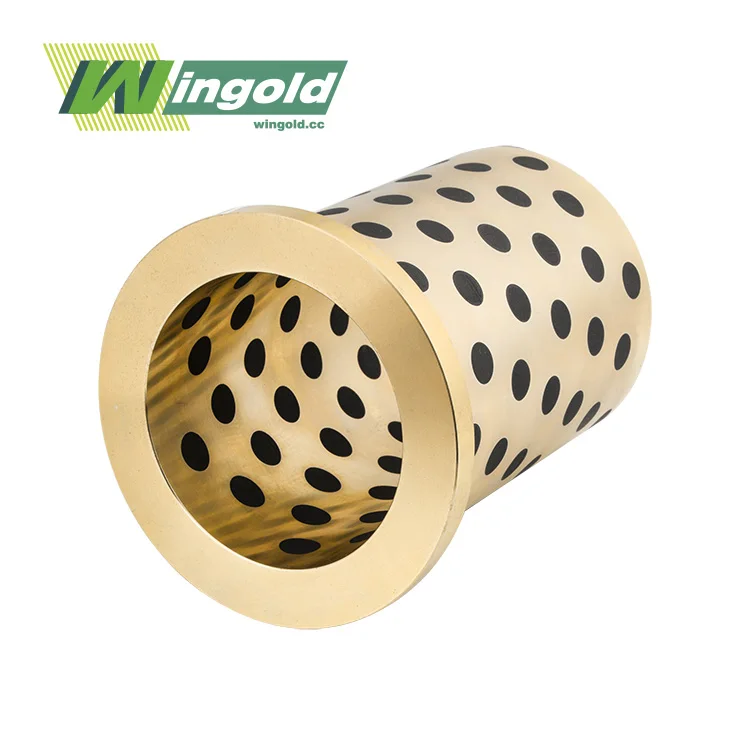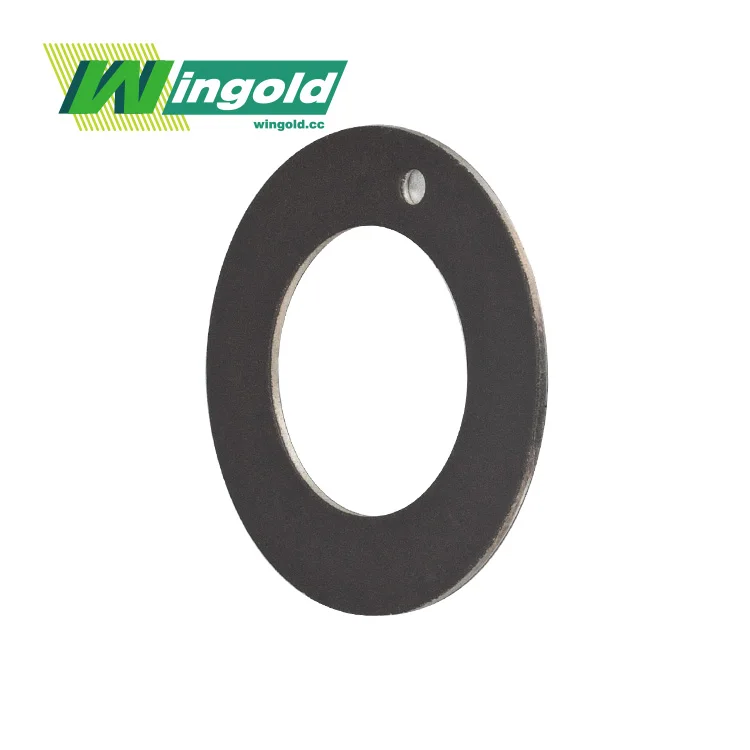Introducing Bronze Plain Bearings and Their Applications
Bronze plain bearings, also known as bronze bushings, are essential components in various industrial applications. These bearings are crafted from bronze alloys, typically consisting of copper and tin, with potential additions of other elements like lead or phosphorus. The composition of the alloy significantly influences the bearing's properties and performance characteristics.
One of the primary advantages of bronze plain bearings is their self-lubricating properties. This feature stems from the porous nature of certain bronze alloys, which can retain oil within their structure. As a result, these bearings can operate with minimal external lubrication, reducing maintenance requirements and extending service life.
Key Characteristics of Bronze Plain Bearings
Bronze plain bearings offer several beneficial characteristics that make them ideal for numerous industrial applications:
High load-bearing capacity: Bronze bearings can withstand substantial loads, making them suitable for heavy-duty machinery.
Excellent wear resistance: The inherent properties of bronze alloys contribute to superior wear resistance, ensuring longevity in demanding environments.
Corrosion resistance: Bronze bearings exhibit good resistance to corrosion, making them suitable for use in harsh or corrosive environments.
Thermal conductivity: Bronze's excellent heat dissipation properties help prevent overheating during operation.
Low friction: The self-lubricating nature of bronze bearings results in reduced friction, leading to improved efficiency and reduced energy consumption.
Common Applications of Bronze Plain Bearings
Bronze plain bearings find widespread use across various industries due to their versatility and reliability. Some common applications include:
Automotive industry: Used in suspension systems, steering mechanisms, and transmission components.
Marine applications: Employed in propeller shafts, rudder bearings, and other marine equipment due to their corrosion resistance.
Construction machinery: Found in excavators, bulldozers, and other heavy equipment.
Agricultural machinery: Used in tractors, harvesters, and other farming equipment.
Industrial machinery: Utilized in conveyor systems, pumps, compressors, and various manufacturing equipment.
Aerospace: Applied in landing gear components and other aircraft systems.
Factors to Consider When Choosing Bronze Plain Bearings
Selecting the appropriate bronze plain bearings for your industrial equipment requires careful consideration of several factors. By evaluating these aspects, you can ensure that the chosen bearings meet your specific requirements and contribute to the overall efficiency and longevity of your machinery.
Load Capacity and Operating Conditions
One of the primary considerations when selecting bronze plain bearings is the load capacity. Assess the type and magnitude of loads that the bearing will experience during operation. This includes both static and dynamic loads, as well as any potential shock loads or vibrations. Ensure that the chosen bearing can withstand these forces without premature failure or excessive wear.
Additionally, consider the operating speed of your equipment. Bronze plain bearings are generally suitable for low to moderate speed applications. However, for high-speed operations, you may need to explore alternative bearing types or consult with a bearing specialist to determine the most appropriate solution.
Environmental Factors and Material Compatibility
The operating environment plays a crucial role in bearing selection. Consider factors such as temperature range, humidity levels, and exposure to corrosive substances or contaminants. Bronze bearings offer good corrosion resistance, but certain alloy compositions may be better suited for specific environmental conditions.
Ensure compatibility between the bronze bearing material and the shaft or housing material. Some combinations may lead to galvanic corrosion or other adverse reactions. Consult with bearing manufacturers or material specialists to verify compatibility and determine if any additional treatments or coatings are necessary.
Dimensional Requirements and Tolerances
Accurate dimensional specifications are essential for proper bearing installation and performance. Consider the required inner and outer diameters, as well as the bearing length. Pay attention to tolerances and clearances, as these factors can significantly impact bearing performance and longevity.
For applications with space constraints, explore options such as flanged bearings or custom-designed solutions that can meet your specific dimensional requirements while providing the necessary performance characteristics.
Optimizing Performance and Maintenance of Bronze Plain Bearings
To maximize the lifespan and efficiency of bronze plain bearings in your industrial equipment, it's crucial to implement proper installation, lubrication, and maintenance practices. By following these guidelines, you can ensure optimal performance and minimize downtime.
Proper Installation Techniques
Correct installation is paramount for the proper functioning of bronze plain bearings. Follow these best practices:
Ensure clean and properly aligned mounting surfaces.
Use appropriate tools and techniques to avoid damaging the bearing during installation.
Verify correct orientation and positioning of the bearing within the housing.
Adhere to recommended press-fit tolerances to prevent bearing movement or distortion.
Allow for proper break-in periods as specified by the manufacturer.
Lubrication Strategies
While bronze plain bearings often feature self-lubricating properties, proper lubrication practices can further enhance their performance and longevity:
For oil-impregnated bearings, follow manufacturer guidelines for initial lubrication and re-lubrication intervals.
Choose lubricants compatible with the bearing material and operating conditions.
Implement appropriate lubrication systems, such as grease fittings or oil reservoirs, for continuous or periodic lubrication.
Monitor lubricant levels and condition regularly to prevent dry running or contamination.
Monitoring and Maintenance
Regular monitoring and maintenance are essential for identifying potential issues and ensuring the longevity of bronze plain bearings:
Conduct periodic inspections to check for signs of wear, damage, or contamination.
Monitor operating temperatures to detect any abnormal heat generation.
Implement vibration analysis techniques to identify potential bearing issues early.
Keep accurate maintenance records to track bearing performance and predict replacement needs.
Clean and protect bearings from contaminants during maintenance procedures.
Conclusion
Selecting the right bronze plain bearings for your industrial equipment is a critical decision that can significantly impact the performance, efficiency, and longevity of your machinery. By carefully considering factors such as load capacity, operating conditions, environmental factors, and dimensional requirements, you can make an informed choice that meets your specific needs.
Remember that proper installation, lubrication, and maintenance practices are equally important in maximizing the benefits of bronze plain bearings. By implementing these strategies, you can ensure optimal performance and minimize downtime in your industrial operations.
At Wingold Bearing, we specialize in providing high-quality bronze plain bearings tailored to your unique requirements. Our team of experts is ready to assist you in selecting the perfect bearing solution for your application. For personalized guidance and to explore our range of bronze plain bearings, please contact us at info@wingold.cc.
FAQ
What are the main advantages of using bronze plain bearings?
Bronze plain bearings offer high load capacity, excellent wear resistance, corrosion resistance, good thermal conductivity, and self-lubricating properties.
How do I determine the correct size of bronze plain bearing for my application?
Consider the shaft diameter, load requirements, and available space. Consult with a bearing specialist for precise sizing.
Can bronze plain bearings operate in high-temperature environments?
Many bronze alloys can withstand high temperatures, but the specific operating range depends on the alloy composition. Consult the manufacturer for temperature limits.
How often should bronze plain bearings be replaced?
Replacement frequency depends on operating conditions, load, and maintenance practices. Regular inspections can help determine when replacement is necessary.
References
1. Harris, T. A., & Kotzalas, M. N. (2006). Essential concepts of bearing technology (5th ed.). CRC Press.
2. Neale, M. J. (2018). The tribology handbook (2nd ed.). Butterworth-Heinemann.
3. Totten, G. E. (Ed.). (2006). Handbook of lubrication and tribology: Volume I – Application and maintenance. CRC Press.
4. SKF Group. (2020). Bearing materials and applications guide. SKF Technical Publications.
5. Stachowiak, G. W., & Batchelor, A. W. (2014). Engineering tribology (4th ed.). Butterworth-Heinemann.




